 W
WDomingo de la Anunciación (1510–1591), born Juan de Ecija, was a Spanish Dominican missionary in New Spain.
 W
WSebastian de Aparicio y del Pardo was a Spanish colonist in Mexico shortly after its conquest by Spain, who after a lifetime as a rancher and road builder entered the Order of Friars Minor as a lay brother. He spent the next 26 years of his long life as a beggar for the Order and died with a great reputation for holiness. He has been beatified by the Catholic Church.
 W
WFrancisco de Ayeta was a Spanish Franciscan missionary of the 17th century, in New Spain and Mexico.
 W
WAlexis Bachelot, SS.CC., was a Roman Catholic priest best known for his tenure as the first Prefect Apostolic of the Sandwich Islands. In that role, he led the first permanent Catholic mission to the Kingdom of Hawaii. Bachelot was raised in France, where he attended the Irish College in Paris, and was ordained a priest in 1820. He led the first Catholic mission to Hawaii, arriving in 1827. Although he had expected the approval of then Hawaiian King Kamehameha II, he learned upon arrival that Kamehameha II had died and a new government that was hostile towards Catholic missionaries had been installed. Bachelot, however, was able to convert a small group of Hawaiians and quietly minister to them for four years before being deported in 1831 on the orders of Kaʻahumanu, the Kuhina Nui of Hawaii.
 W
WJohann Jakob Baegert was a Jesuit missionary at San Luis Gonzaga in Baja California Sur, Mexico. He is noted for his detailed and acerbic account of the peninsula, the culture of its native inhabitants, and the history of its Spanish exploration and missionization.
 W
WGerónimo Boscana was an early 19th-century Franciscan missionary in Spanish Las Californias and Mexican Alta California. He is noted for producing the most detailed ethnographic picture of the cultures of Native Americans in California to come out of the missionary period, an account that "...for his time and profession, is liberal and enlightened" (Kroeber).
 W
WHoracio Carochi (1586–1666) was a Jesuit priest and grammarian who was born in Florence and died in Mexico. He is known for his grammar of the Classical Nahuatl language.
 W
WLorenzo José Carranco was a Jesuit missionary.
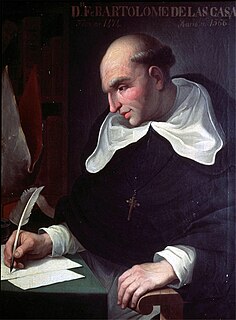 W
WBartolomé de las Casas was a 16th-century Spanish landowner, friar, priest, and bishop, famed as a historian and social reformer. He arrived in Hispaniola as a layman then became a Dominican friar and priest. He was appointed as the first resident Bishop of Chiapas, and the first officially appointed "Protector of the Indians". His extensive writings, the most famous being A Short Account of the Destruction of the Indies and Historia de Las Indias, chronicle the first decades of colonization of the West Indies. He described the atrocities committed by the colonizers against the indigenous peoples.
 W
WJuan de Córdova was a Spanish Dominican friar, known for his studies of the Zapotec languages. It is not certain whether Córdova was his family name, or whether he assumed it from his native city after he became a Dominican.
 W
WJoan Crespí or Juan Crespí was a Franciscan missionary and explorer of Las Californias.
 W
WFrancisco García Diego y Moreno, OFM, was the first bishop of the Diocese of the Two Californias.
 W
WDiego Durán was a Dominican friar best known for his authorship of one of the earliest Western books on the history and culture of the Aztecs, The History of the Indies of New Spain, a book that was much criticised in his lifetime for helping the "heathen" maintain their culture.
 W
WJuan de Esteyneffer was a Moravian German lay Jesuit missionary sent to the New World. He is known for his 1711 work Florilegio Medicinal, which compiled a combination of New World traditional medicine, European materia medica, and 18th-century European medical diagnosis.
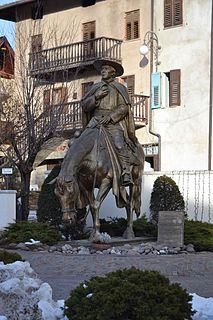 W
WEusebio Francisco Kino, often referred to as Father Kino, was an Italian Jesuit, missionary, geographer, explorer, cartographer and astronomer born in the Territory of the Bishopric of Trent, then part of the Holy Roman Empire. For the last 24 years of his life he worked in the region then known as the Pimería Alta, modern-day Sonora in Mexico and southern Arizona in the United States. He explored the region and worked with the indigenous Native American population, including primarily the Tohono O'Odham, Sobaipuri and other Upper Piman groups. He proved that the Baja California Peninsula is not an island by leading an overland expedition there. By the time of his death he had established 24 missions and visitas.
 W
WFerdinand Konščak was a Croatian Jesuit missionary, explorer and cartographer.
 W
WFermín de Francisco Lasuén de Arasqueta was a Spanish Franciscan missionary to Alta California president of the Franciscan missions there, and founder of nine of the twenty-one Spanish missions in California.
 W
WAntonio Margil was a Spanish (American) Franciscan missionary in North and Central America.
 W
WMelchor Oyanguren de Santa Inés (1688–1747) was a Basque Franciscan missionary and linguist who served in Asia and North America. He wrote grammars of Japanese (1738) and Tagalog (1742).
 W
WAlonso de Montúfar y Bravo de Lagunas, O.P., was a Spanish Dominican friar and prelate of the Catholic Church, who ruled as the second Archbishop of Mexico from 1551 to his death in 1572. He approved and promoted the devotion to Our Lady of Guadalupe that arose during his reign.
 W
WPedro Moya de Contreras was a prelate and colonial administrator who held the three highest offices in the Spanish colony of New Spain, namely inquisitor general, Archbishop of Mexico, and Viceroy of Mexico, September 25, 1584 – October 17, 1585. He was the 6th Viceroy, governing from September 25, 1584, to October 16, 1585. During this interval he held all three positions.
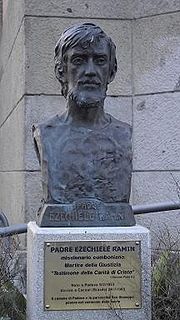 W
WFather Ezechiele Ramin MCCI, familiarly known as "Lele" in Italy and "Ezequiel" in Brazil, was an Italian Marxist Comboni missionary and artist who was described as a martyr of charity by Pope John Paul II after his murder in Brazil while defending the rights of the farmers and the Suruí natives of the Rondônia area against the local landowners.
 W
WIvan Ratkaj, also Ivan Rattkay, was a Jesuit missionary, explorer and cartographer. He wrote the first detailed description of the Tarahumara, a Native Mexican people.
 W
WBernardino de Sahagún was a Franciscan friar, missionary priest and pioneering ethnographer who participated in the Catholic evangelization of colonial New Spain. Born in Sahagún, Spain, in 1499, he journeyed to New Spain in 1529. He learned Nahuatl and spent more than 50 years in the study of Aztec beliefs, culture and history. Though he was primarily devoted to his missionary task, his extraordinary work documenting indigenous worldview and culture has earned him the title as “the first anthropologist." He also contributed to the description of the Aztec language Nahuatl. He translated the Psalms, the Gospels, and a catechism into Nahuatl.
Juan María de Salvatierra, S.J., was a Catholic missionary to the Americas.
 W
WPhilipp Segesser was a German-speaking Swiss Jesuit missionary who spent much of his career in Sonora, Mexico.
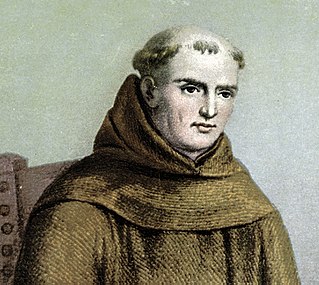 W
WJunípero Serra y Ferrer, O.F.M., was a Roman Catholic Spanish priest and friar of the Franciscan Order. He is credited with establishing the Franciscan Missions in the Sierra Gorda, a UNESCO World Heritage Site. He later founded a mission in Baja California and the first nine of 21 Spanish missions in California from San Diego to San Francisco, in what was then Spanish-occupied Alta California in the Province of Las Californias, New Spain.
 W
WThe Testerian catechisms (Spanish: Catecismos testerianos) are religious documents used in the evangelization of the New Spain. They explain the Catholic doctrine through images based on indigenous conventions prior to the Conquest of Mexico and western Spanish writing and other languages. These documents were an attempt to be educative materials for those religious that did not know the aboriginal languages then spoken in the territory that is now Mexico. They received their name for Jacobo of Testera, a Franciscan friar who elaborated catechisms of this type.
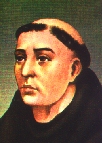 W
WToribio of Benavente, O.F.M., also known as Motolinía, was a Franciscan missionary who was one of the famous Twelve Apostles of Mexico who arrived in New Spain in May 1524. His published writings are a key source for the history and ethnography of the Nahuas of central Mexico in the immediate post-conquest period as well as for the challenges of Christian evangelization. He is probably best known for his attacks on the Dominican defender of the rights of the indigenous peoples, Bartolomé de las Casas, who criticized the Conquest. Though agreeing with Las Casas's criticism of the abuses of the conquistadors, he did not agree with the whole sale condemnation of the Spanish Conquest, as well as his criticisms of the Franciscan practices of baptism en masse of the indigenous people of the new world. Due to these differences he went on to vilify Las Casas.